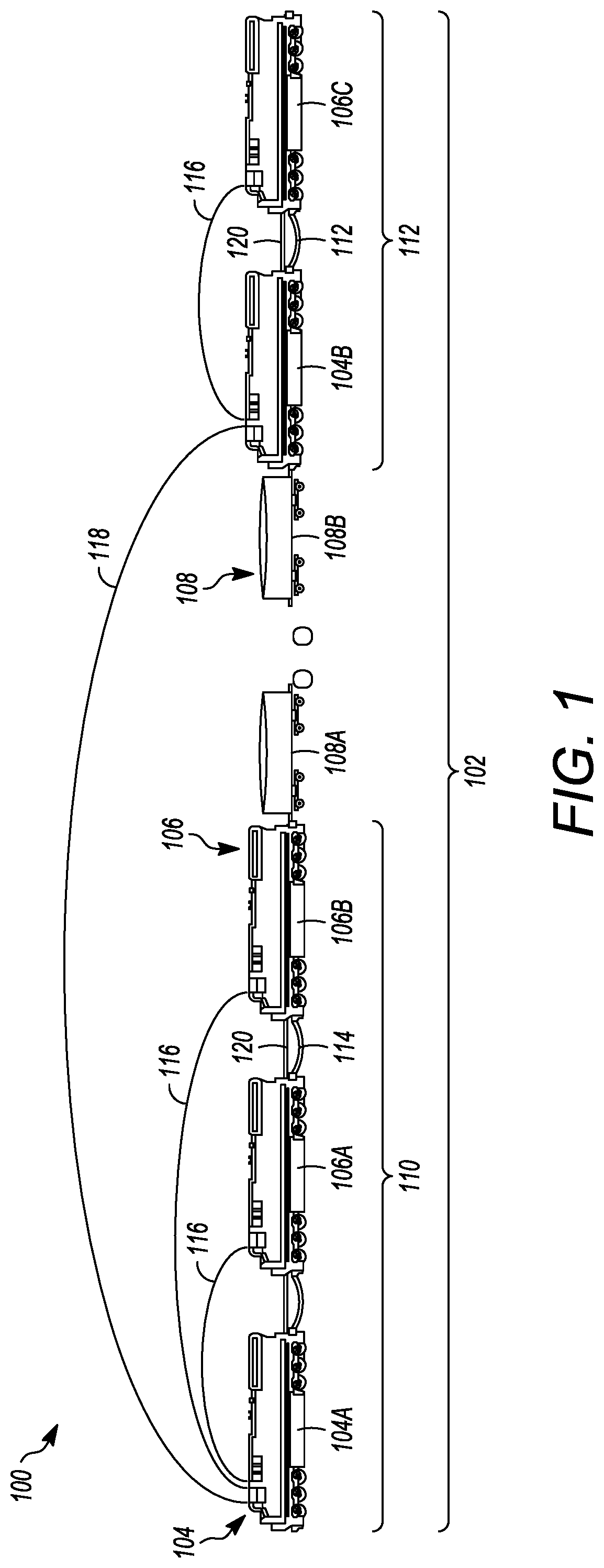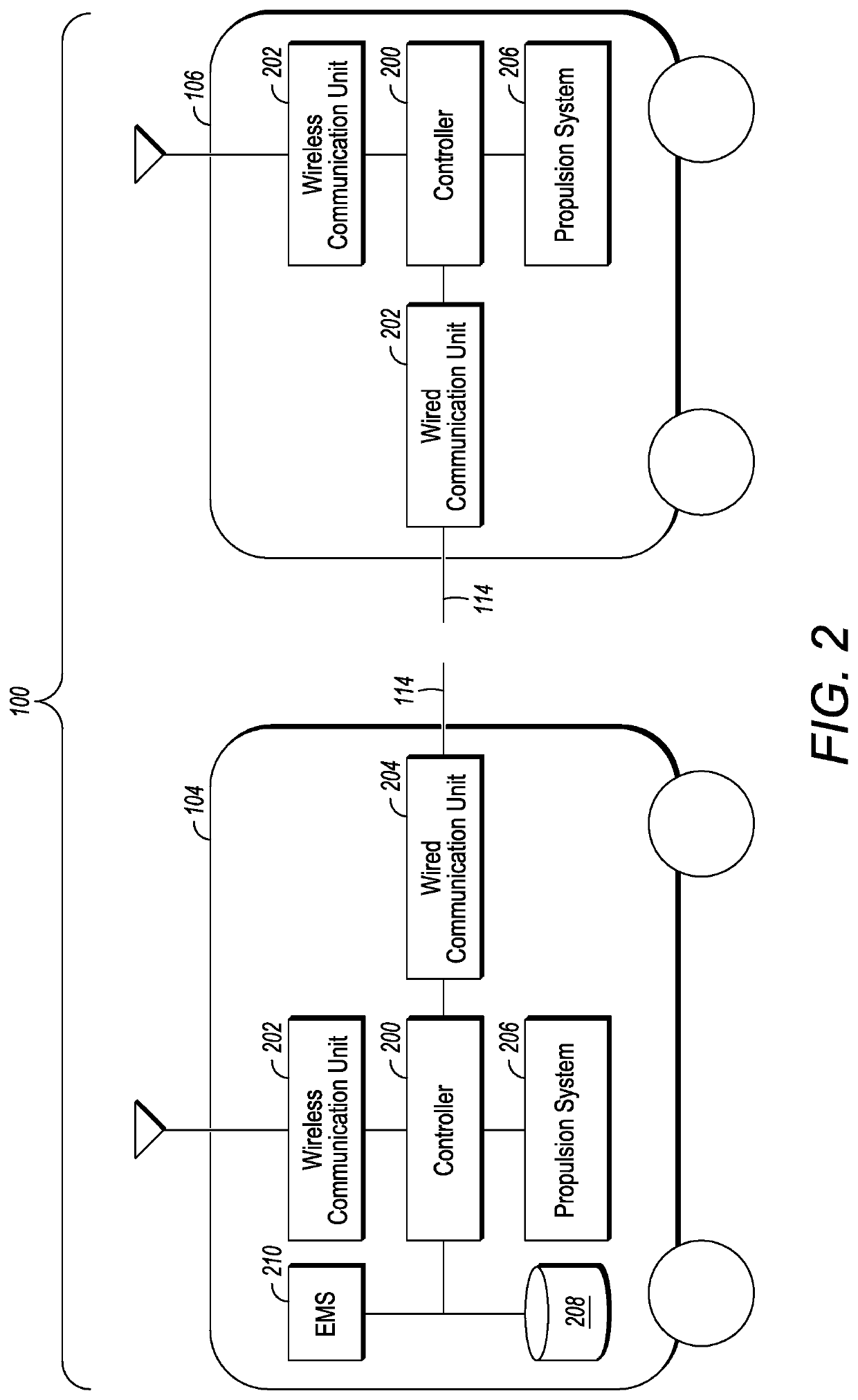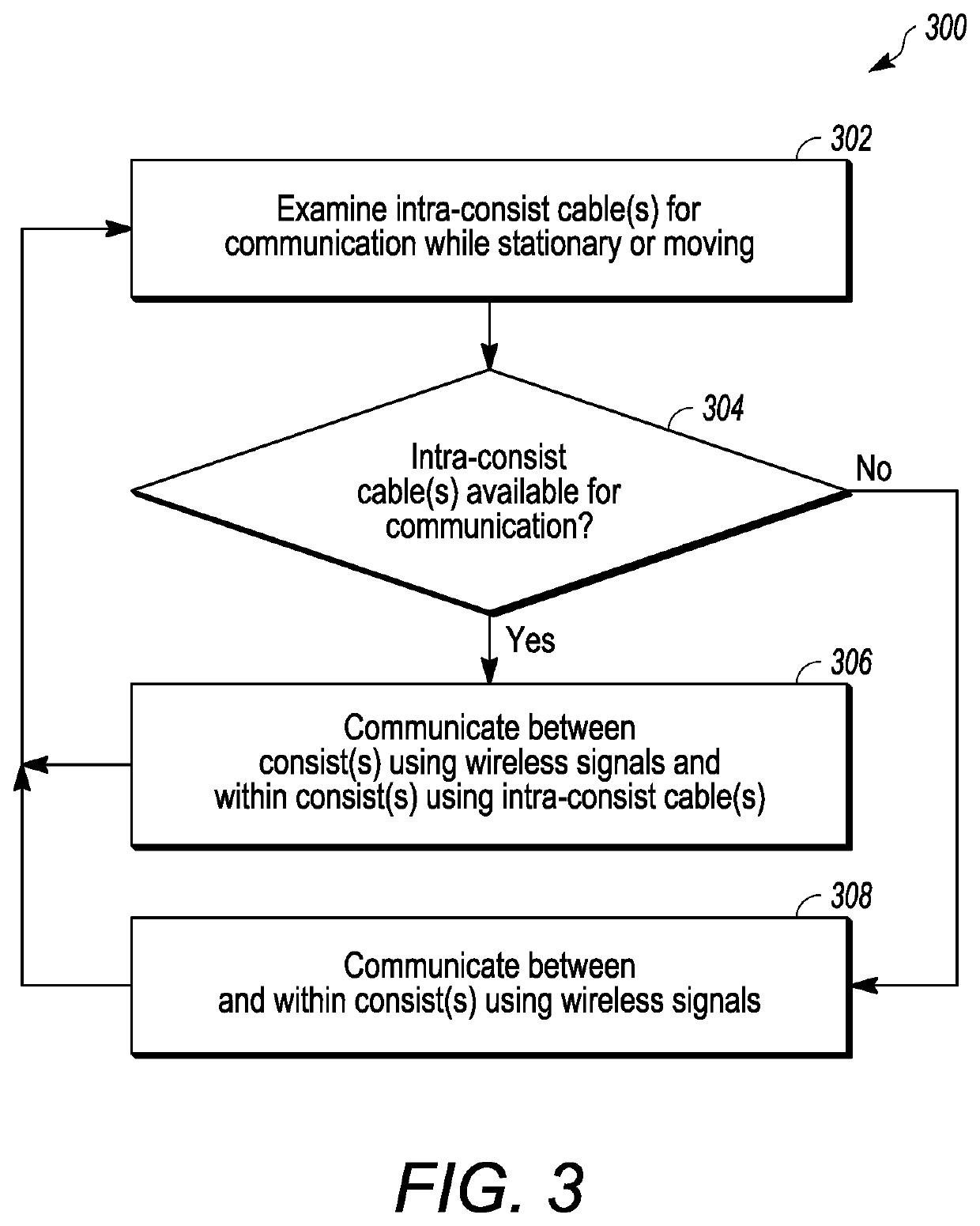Wireless vehicle control system
- Summary
- Abstract
- Description
- Claims
- Application Information
AI Technical Summary
Benefits of technology
Problems solved by technology
Method used
Image
Examples
Embodiment Construction
[0014]FIG. 1 illustrates one example of a vehicle control system 100 disposed onboard a multi-vehicle system 102. The vehicle system is formed from multiple propulsion-generating vehicles 104, 106 (vehicles 104A-B, 106A-C) and one or more non-propulsion-generating vehicles 108 (vehicles 108A-B). The number and / or arrangement of the vehicles 104, 106, 108 in the vehicle system may differ from what is shown in FIG. 1. In the illustrated example, the propulsion-generating vehicles are locomotives and the non-propulsion-generating vehicles are rail cars, but alternatively, these vehicles may not be rail vehicles. For example, the vehicles may be automobiles, trucks, trailers, mining vehicles, agricultural vehicles, or the like. The adjacent or neighboring vehicles in the vehicle system are mechanically coupled with each other (e.g., by couplers 118). Alternatively, two or more of the vehicles may be logically coupled but not mechanically coupled, such as where the logically coupled vehi...
PUM
 Login to view more
Login to view more Abstract
Description
Claims
Application Information
 Login to view more
Login to view more - R&D Engineer
- R&D Manager
- IP Professional
- Industry Leading Data Capabilities
- Powerful AI technology
- Patent DNA Extraction
Browse by: Latest US Patents, China's latest patents, Technical Efficacy Thesaurus, Application Domain, Technology Topic.
© 2024 PatSnap. All rights reserved.Legal|Privacy policy|Modern Slavery Act Transparency Statement|Sitemap



